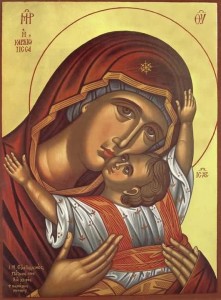Post Author: Bill Pratt
It seems clear that the first three Gospels – Matthew, Mark, and Luke – are interdependent. That is, they share common literary and oral sources. Daniel Wallace, Professor of New Testament Studies, lays out the case for this interdependence in an article called “The Synoptic Problem.” Most Christians have given this very little thought, but I think that the more we know about the process God used to give us the gospels, the better we can understand them.
Wallace presents four arguments for the interdependence of the synoptic gospels. First, there is the agreement in wording. According to Wallace, “The remarkable verbal agreement between the gospels suggests some kind of interdependence.” Wallace notes that many laypeople reject this idea and argue that the Holy Spirit inspired each of the synoptic authors to write identical words in many cases, that the gospels are all independent of each other. But does this make sense? Wallace thinks not.
First, it cannot explain the differences among the writers—unless it is assumed that verbal differences indicate different events. In that case, one would have to say that Jesus was tempted by the devil twice, that the Lord’s Supper was offered twice, and that Peter denied the Lord six to nine times! In fact, one might have to say that Christ was raised from the dead more than once if this were pressed!
Second, if Jesus spoke and taught in Aramaic (at least sometimes, if not usually), then why are these verbal agreements preserved for us in Greek? It is doubtful that each writer would have translated Jesus’ sayings in exactly the same way so often.
Third, even if Jesus spoke in Greek exclusively, how is it that not only his words but his deeds are recorded in verbal identity? There is a material difference between remembering the verbiage of what one heard and recording what one saw in identical verbiage.
Fourth, when one compares the synoptic materials with John’s Gospel, why are there so few verbal similarities? On an independent hypothesis, either John or the synoptics are wrong, or else John does not record the same events at all in the life of Jesus.
Wallace’s second argument for interdependence is agreement in order. “Although there is a great deal of disagreement in the order of the pericopae [story units] among the synoptic gospels, there is an even greater amount of agreement.” In other words, there is a lot of commonality in the way the three synoptic writers ordered the stories about Jesus.
A counter-argument here may be that the reason the order of the stories are the same is because they are in chronological order. Wallace, however, notes that the gospel pericopae are not all in strictly chronological order. Why is that?
First, there is occasional disagreement in the order. For example, many of Matthew’s parables in chapter 13 are found in Luke 8 or Luke 13. The scribe who approached Jesus about the great commandment is placed in the Passion Week in Matthew and Mark, and vaguely arranged elsewhere in Luke.
Second, it is evident that quite a bit of material is grouped topically in the gospels—e.g., after the Sermon on the Mount in Matthew come several miracles by Jesus. Indeed, “Matthew has furthermore arranged his entire Gospel so that collections of narratives alternate with collections of sayings.”
Third, the early patristic writers (e.g., Papias) recognized that the gospel writers did not follow a strict chronological arrangement.
Fourth, there is a studied reserve in the gospels from pinpointing the dates of the various incidents. Introductory comments such as, “immediately,” “after this,” “on another occasion,” “one day,” etc. are the norm. In other words, there seems to be no intent on the part of the evangelists to present a strict chronological sequence of events.
In part 2 of this series, we will look at the final two arguments that Wallace gives for the interdependence of the synoptic gospels.

 According to church historian John Hannah, there were four major Protestant streams that developed during the Reformation in the 16th century: Anglicanism, Lutheranism, Calvinism, and Anabaptism. Each of these streams placed great stress on the idea of salvation by faith alone, yet they did not all agree on what infant baptism means or whether it should even be done.
According to church historian John Hannah, there were four major Protestant streams that developed during the Reformation in the 16th century: Anglicanism, Lutheranism, Calvinism, and Anabaptism. Each of these streams placed great stress on the idea of salvation by faith alone, yet they did not all agree on what infant baptism means or whether it should even be done. The Book of Revelation, according to some Christians, teaches a literal thousand-year reign of Christ on earth after his second coming (see Rev. 20). This will then be followed by the creation of a new heaven and new earth. This view is known today as premillenialism.
The Book of Revelation, according to some Christians, teaches a literal thousand-year reign of Christ on earth after his second coming (see Rev. 20). This will then be followed by the creation of a new heaven and new earth. This view is known today as premillenialism.